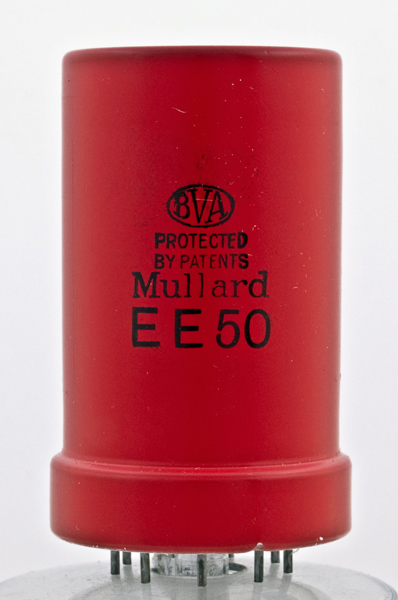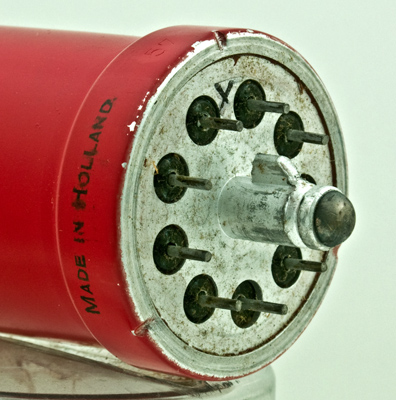
|
The EE50 dates from 1938 and was a product of the quest for RF valves for television. Television was not only transmitted at high frequencies but also had a wide bandwidth. To provide gain under these conditions required a high mutual conductance from the valve. Traditional valve making practice would not produce a suitable device.Manufacturers tried different techniques to overcome the problem with electron multiplication being one option. The EE50 can also be regarded as a secondary emission pentode. The second cathode would be maintained at about 150 Volts positive of the main cathode. This cathode would operate at about 8 mA of current and circuits of the time show the output being taken from this second cathode.
The B9G base was designed for this valve. The design work took place in Holland and although badged as a Mullard valve, this clearly was made by Philips. The all glass construction was also developed for the EE50 as the short path from active elements to the outside world helped reduce inter-electrode capacitance and also promote efficiency at high frequencies.The EE50 can also be seen as a dead end, as within a few months Philips had developed the conventional valve to give similar performance but with lower noise. This second landmark was the EF50 that became so important in WWII as Radar reception needed the same characteristics of wide bandwidth and high frequency as Television. In fact the PYE 45 MHz IF strip was developed for TV and used extensively for Radar.The wide glass tube envelope is 33 mm in diameter and, excluding the B9G base pins, is 57 mm tall.References: Data-sheet. Type EE50 was first introduced in 1938. See also 1938 adverts. |
Pin Connections
| 1 | 2 | 3 | 4 | 5 | 6 | 7 | 8 | 9 |  h | k2 | a | g2 | m | k1 | g1 | m | h |
|
|
Absolute Maximum Operating Conditions¶
| Vh | Ah | Va | Vs | mAa | mAs | gm | 
| 6.3 | 0.3 | 250 | 250 | 10 | 0.6 | 14 |
|
Updated December06, 2012.
|
|